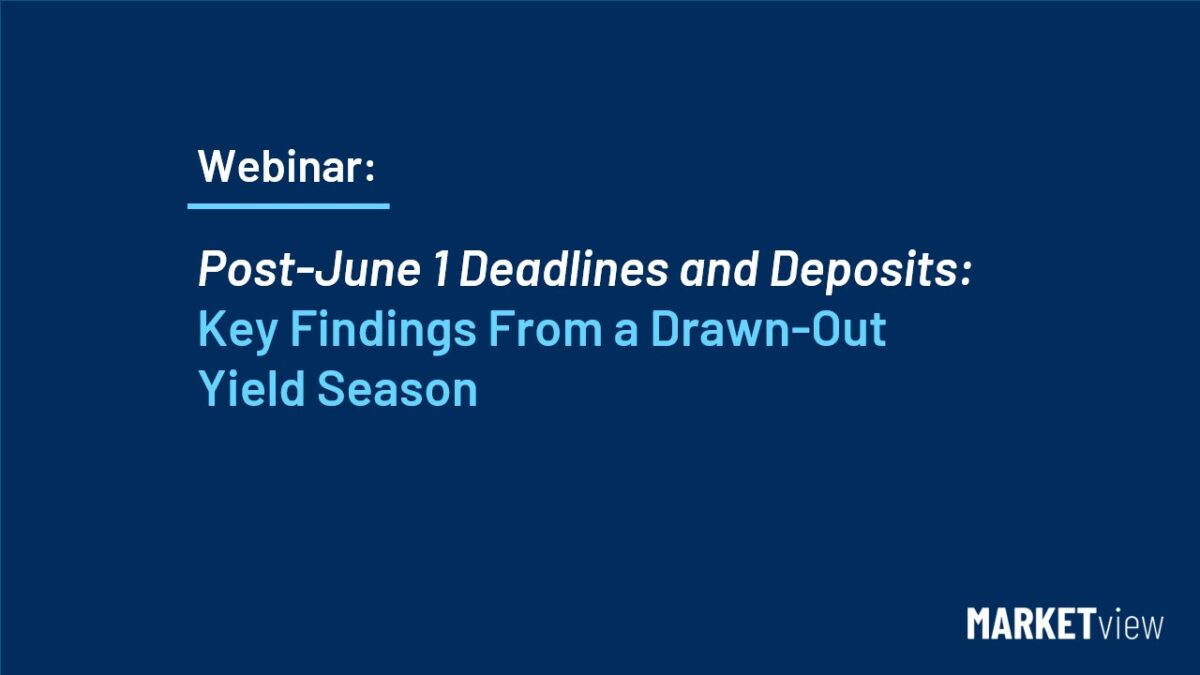As the enrollment profession begins to dissect a truly anomalous and challenging yield season, new learnings are quickly emerging. One of the latest-breaking findings sheds light on the massive uptick in late admit activity (during the months of March, April, and May) and the impact it had on deposits.
Using data within the MARKETview platform, representing 150+ colleges and universities nationwide, we can provide greater visibility into the characteristics of these students in such areas as consumer income, residency, and inquiry source. We will also share point-in-time comparative views between 2023 and 2024. All of which will give you valuable insights into understanding and managing this unique audience in pursuit of achieving your enrollment goals.
We’ll begin with a general overview of late-admit activity.

Across our partner base, we saw moderate year-over-year growth in admits through March and April, before things really ramped up in May, reflected in a 52.6% jump compared to 2023. Breaking this out by school type, our Public Cohort experienced a massive 119.0% spike in May admits while our Private Cohort grew by a very strong 21.7%.
These late-activity increases can primarily be attributed to rolling admission decisions as well as students coming off waitlists, representing admit strategies that didn’t come into play nearly as much in previous cycles.
Post-June 1 Deadlines and Deposits: Key Findings From a Drawn-Out Yield Season
See how the full yield picture has come into focus following the latest June 1 deadline extensions at many schools.
Watch Recording
Now, let’s investigate how deposits from those late admits fared.

While March and April admits were largely down in deposits compared to the previous year, this year’s May admits translated to very strong deposit activity with a 22.5% increase over 2023.
Cohort deposits followed a similar trajectory with deposit results that really made a difference across our partner base.
Next, we’ll look into characteristics of students who deposited pre- and post-May 1.

We’re seeing interesting commonalities depending on which side of May 1 a student deposited in 2024. In general, the students who applied post-May 1 tended to be:
- More likely to first inquire as seniors
- More low income
- More in-state
- More stealth
In our final section we’ll further explore these characteristics from year-over-year perspectives.

Comparing the composition of students depositing after May 1 in 2023 versus 2024 reveals clear similarities – with most deposits coming from later inquiries, lower income households, in-state residents, and stealth applicants.
So, perhaps in this one single area, the deposit season this year isn’t quite so different from the previous cycle!
Want to learn how MARKETview, higher education’s only aggregated and real-time data platform, can provide you with advanced context and perspectives for achieving your enrollment and revenue goals? Schedule a brief demo with us today.
